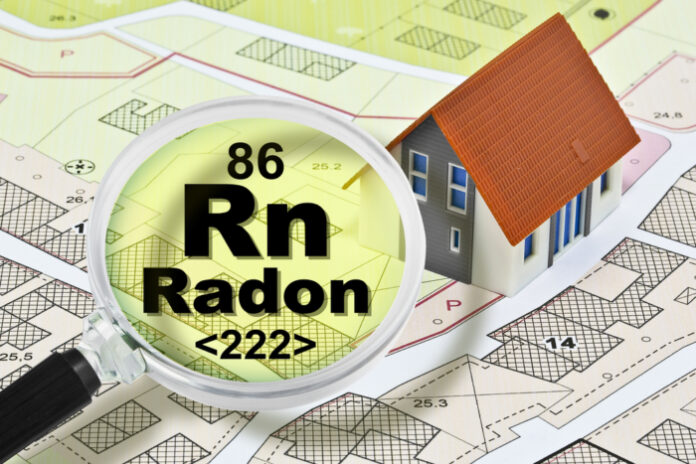By Insoo Park, CEO – Ecosense Inc.
Homeowners typically take a number of steps to safeguard their dwellings. Insurance policies provide for recovery in the case of floods, fires, and other calamities, and home warranties — which function in a way that is similar to insurance — provide relief when major systems and/or appliances fail or pests such as termites cause damage.
Typically, these precautions combine inspections, which are meant to detect and allow for the prevention of problems, with restoration efforts that mitigate damage when problems occur. They give homeowners peace of mind as well as protect their investments, and although their costs can be significant, they are usually considered to be well justified.
Despite the fact radon exposure has serious health ramifications, radon testing is one area that often falls off the radar in terms of safeguarding the home’s occupants. Unfortunately, radon rarely gets attention except when a home is inspected for a real estate transaction, during which time constraints limit the test period to two or three days.
Testing prior to purchase is certainly worthwhile, but the results may fall short of determining one’s potential radon exposure over time. That’s because indoor radon concentrations tend to vary from day to day, week to week, and month to month. The surest way to understand your family’s radon risk is to continuously monitor the radon in your home.
The Dangers of Long-Term Exposure to Radon Gas
According to the World Health Organization, cancer is responsible for 1 out of every 6 deaths globally, making it one of the leading causes of death in the world. The National Cancer Institute identifies lung cancer as the leading cause of cancer deaths in the world, accounting for nearly three times as many deaths as the second most deadly form. Among lung cancer deaths, only cigarette smoking causes more deaths than radon gas.
Radon is a colorless and odorless gas that occurs naturally when the element radium breaks down. Because radium is found in rocks, soil, and water, it is often present in and around homes. As radium releases radon, the gas can be drawn into homes through cracks and other openings in foundations and slabs, where it can accumulate to dangerous levels.
The United States Environmental Protection Agency (EPA) estimates that over 20,000 people die annually in the U.S. from radon-related lung cancer. It is considered especially dangerous because those who are affected by radon show no immediate symptoms.
What is also concerning is not only high levels of radon alone but a strong relationship between prolonged exposure to low levels of radon and lung cancer. The EPA further believes that 1 out of every 15 homes in the U.S. has elevated levels of radon.
The Need for Ongoing Radon Monitoring
When radon testing is conducted during the time constraints of a home purchase, a 48-hour test period under closed-house conditions is typically the best test option available to a homebuyer. However, continuous monitoring over extended time provides a much clearer picture of occupant exposure.
It is not unusual to see large variations in indoor radon concentrations. Frequently, hourly average swings in radon concentrations follow a daily pattern. Additionally, radon levels typically fluctuate as a response to changes in weather or activities happening within the house. In fact, radon levels can be quite different from season to season.
Such fluctuations make it critical that the threat of radon be addressed by long-term monitoring. Monitoring over several months is necessary to provide a true assessment of the potential for health risks. In addition, reliable monitoring devices should be used that can accurately track temporal radon variations.
Overcoming the Challenges to Proper Radon Testing
Ensuring that you have used a reliable monitoring device is the first step to obtaining a clear picture of the radon threat. Passive radon tests commonly use charcoal to absorb air in a space, with an analysis of the charcoal done later in a lab setting. The accuracy of such passive tests has been challenged by recent studies, including a University of Calgary study that showed the tests result in imprecise results as much as 99 percent of the time.
Active radon monitors use electronic sensors to detect alpha particles emitted by radon. The most effective monitors can produce readings in as little as 10 minutes with a high level of sensitivity. The monitors also provide ongoing feedback on any fluctuations that occur in radon levels.
Proper placement of the monitoring device is also critical, which is why readings should be taken in locations where occupants are more likely to be for extended periods of time, such as living rooms, playrooms, or bedrooms. The ideal placement for the monitor is at least 20 inches above the floor, 12 inches from an exterior wall, and 36 inches from exterior windows or doors. Monitors should not be positioned inside closets, cabinets, or crawl spaces.
Mitigating When High Radon Levels Are Detected
Radon is measured in picocuries per liter (pCi/L) and the EPA says that levels of 4 pCi/L or higher should be addressed. Obtaining an accurate reading should involve at least 90 days of monitoring. However, if levels are shown to be 8 pCi/L or higher over a seven-day period, immediate action should be taken.
When high levels are detected, increasing ventilation by opening windows and doors is a temporary measure that can be employed. Monitoring should be continued to see if the increased ventilation lowers levels. Active Soil Depressurization is a mitigation strategy that prevents radon from entering the home by drawing the gas from below the house and venting it into the air where it is diluted to safe levels.
The Value of Radon Monitoring and Mitigation
Long-term exposure to elevated levels of radon gas has been repeatedly demonstrated to increase the risk of lung cancer in humans. It takes years for this form of cancer to develop, with detection of the disease usually only happening when it is in its advanced stages. Ongoing monitoring for radon ensures that elevated levels can be detected and avoided before they result in deadly consequences.
In addition, proper measures to reduce radon exposure have the potential to dramatically impact insurance costs. According to the Cost of Cancer article on Health Payer Intelligence, the average lifetime cost of lung cancer diagnosis and treatment in the U.S. is approximately $282,000 per case. Taking the number at face value results in an estimated annual healthcare cost for radon-induced lung cancer treatment of nearly $10 billion nationally (228,820 new cases/year x 14% x $282,000).
For something that is, to some degree, preventable, that is a big number. As to who pays it, we all do — through the taxes that support Medicare and Medicaid, private insurance premiums, deductibles, co-pays, and charitable contributions. That is why radon monitoring efforts are so important, both for our personal health and the health of the nation.
Find a Home-Based Business to Start-Up >>> Hundreds of Business Listings.
















































